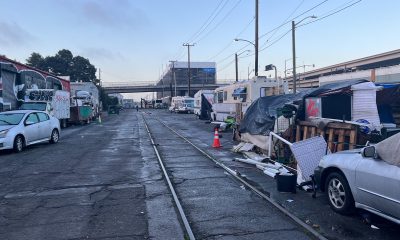Business
California Could Decriminalize Drug “Magic Mushrooms” as Early as Next Year
The seeds have been planted for another California law that could loosen restrictions on the use of recreational drugs in the United States.

The seeds have been planted for another California law that could loosen restrictions on the use of recreational drugs in the United States.
Last week, Secretary of State Dr. Shirley N. Weber announced that a new initiative to decriminalize psilocybin mushrooms, — also known by its street name “shrooms” — has been cleared by her office. Proponents of the legislation can begin collecting signatures to qualify it as a statewide ballot measure in 2022.
The initiative calls for the decriminalization of psilocybin mushrooms under California’s penal code. It also calls for the legalization of cultivation, manufacture, processing, distribution, transportation, possession, storage, consumption, and retail sale of the hallucinogenic fungi and chemical compounds it contains – as well as products and extracts derived from it.
Currently, under federal law, mushrooms are classified as a Schedule 1 drug. That designation indicates that a drug has a high potential for abuse, and it has no clear medical benefits.
If the initiative is qualified and approved by California voters, it would also authorize the research and use of psilocybin mushrooms for treatment by qualified healthcare practitioners. The requirement for an “independent professional certifying body” would exist to establish qualifications for healthcare practitioners who provide psilocybin mushroom-assisted therapy and to create protocols for such therapy.
“As Chair of the Senate Public Safety Committee and as a Black man in America, I have come to know what justice is or is not for people that look like me,” Sen. Steven Bradford (D-Gardena) told California Black Media.
“The War on Drugs had drastic consequences and a disproportionate impact on people of color, urban communities, and poor people despite studies showing drug usage being equal across various landscapes. That is one of the reasons why I support the decriminalization of certain drugs, including psilocybin. The effects of the war on drugs, however, is not the only reason for my position. Data and science have proven psilocybin’s potential to help people in a myriad of therapeutic applications. We gain nothing by continuing to live in the wreckage of the war on drugs, it is time to move on.”
The Attorney General prepares the legal title and summary that is required to appear on initiative petitions. When the official language is complete, the Attorney General forwards it to the proponent and to the Secretary of State, and the initiative may be circulated for signatures. The Secretary of State then provides calendar deadlines to the proponent and to county elections officials.
California was a trailblazer in the national movement to legalize marijuana when it first overturned prohibitions against medical uses of cannabis 25 years ago. Marijuana for recreational use is now legal in 47 states and the District of Columbia.
The proponent of the measure, Ryan Munevar, must collect signatures of 623,212 registered voters (5% of the total votes cast for governor in the November 2018 general election) for the measure to become eligible for the November 2022 ballot.
“I’m not an optimistic person at all, I’m more of a mathematician when it comes to these things, we have this down to a science” said Munevar. “But the reception has been phenomenal.”
Kevin Sabet, drug policy adviser to President Obama and author of the book, “Smokescreen: What the Marijuana Industry Doesn’t Want You to Know,” has been an outspoken critic of legalization of marijuana, mushrooms and other drugs.
Sabet warns that profit motives, not public health imperatives, drive political legalization efforts.
“I worry that given the precedent we have set with tobacco, alcohol and now marijuana, we are setting up a new addictive industry that wants to deal with all kinds of drugs that have never been commercialized before, like mushrooms,” he said before Oregon decriminalized “shrooms” in 2019.
In August, Sen. Scott Weiner (D-San Francisco) requested the cancelation of a hearing for a similar bill he authored SB 519. That legislation proposes removing criminal penalties for using and sharing of psilocybin, dimethyltryptamine (DMT), ibogaine, mescaline, LSD, ketamine and MDMA for people over age 21.
Munevar has 180 days to circulate petitions for the measure, meaning the signatures must be submitted to county elections officials no later than March 15, 2022.
Activism
Oakland Post: Week of April 24 – 30, 2024
The printed Weekly Edition of the Oakland Post: Week of April 24 – 30, 2024

To enlarge your view of this issue, use the slider, magnifying glass icon or full page icon in the lower right corner of the browser window. ![]()
Bay Area
State Controller Malia Cohen Keynote Speaker at S.F. Wealth Conference
California State Controller Malia Cohen delivered the keynote speech to over 50 business women at the Black Wealth Brunch held on March 28 at the War Memorial and Performing Arts Center at 301 Van Ness Ave. in San Francisco. The Enterprising Women Networking SF Chapter of the American Business Women’s Association (ABWA) hosted the Green Room event to launch its platform designed to close the racial wealth gap in Black and Brown communities.
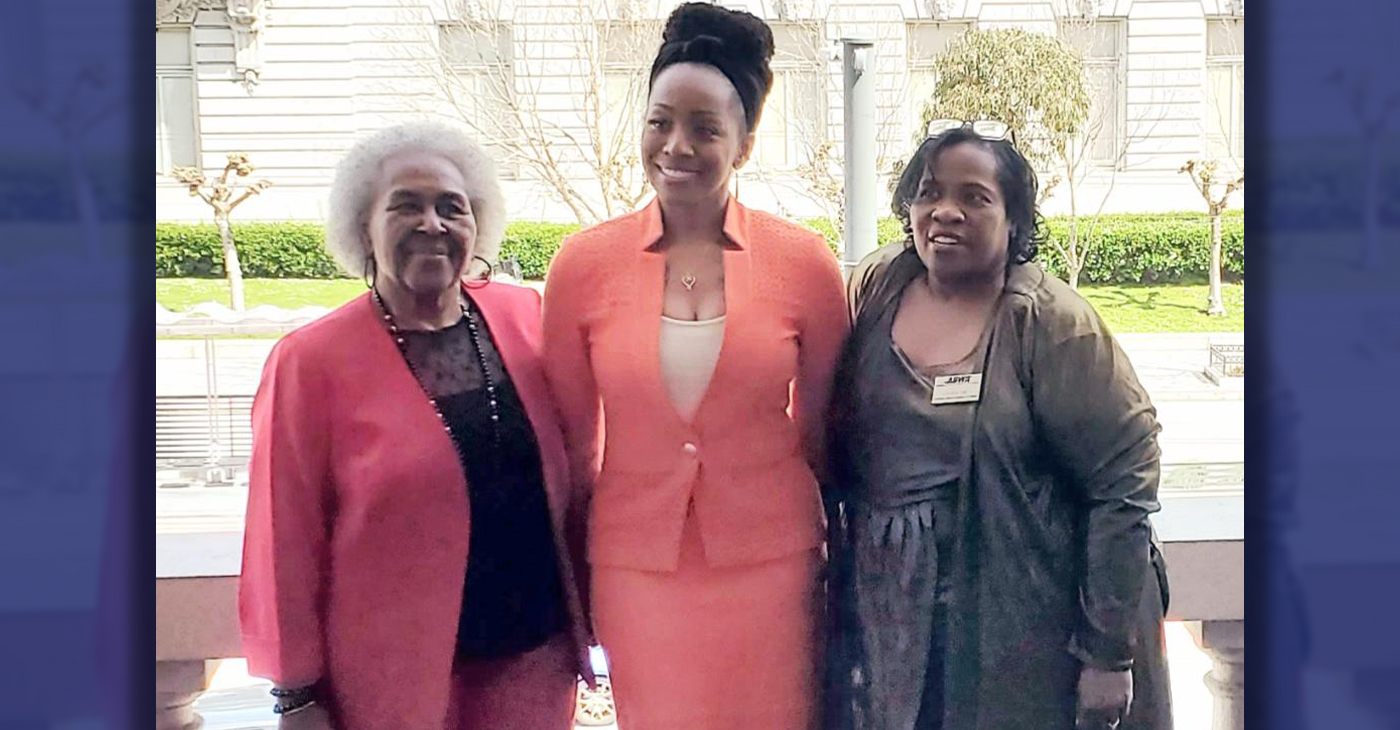
By Carla Thomas
California State Controller Malia Cohen delivered the keynote speech to over 50 business women at the Black Wealth Brunch held on March 28 at the War Memorial and Performing Arts Center at 301 Van Ness Ave. in San Francisco.
The Enterprising Women Networking SF Chapter of the American Business Women’s Association (ABWA) hosted the Green Room event to launch its platform designed to close the racial wealth gap in Black and Brown communities.
“Our goal is to educate Black and Brown families in the masses about financial wellness, wealth building, and how to protect and preserve wealth,” said ABWA San Francisco Chapter President LaRonda Smith.
ABWA’s mission is to bring together businesswomen of diverse occupations and provide opportunities for them to help themselves and others grow personally and professionally through leadership, education, networking support, and national recognition.
“This day is about recognizing influential women, hearing from an accomplished woman as our keynote speaker and allowing women to come together as powerful people,” said ABWA SF Chapter Vice President Velma Landers.
More than 60 attendees dined on the culinary delights of Chef Sharon Lee of The Spot catering, which included a full soul food brunch of skewered shrimp, chicken, blackened salmon, and mac and cheese.
Cohen discussed the many economic disparities women and people of color face. From pay equity to financial literacy, Cohen shared not only statistics, but was excited about a new solution in motion which entailed partnering with Californians for Financial Education.
“I want everyone to reach their full potential,” she said. “Just a few weeks ago in Sacramento, I partnered with an organization, Californians for Financial Education.
“We gathered 990 signatures and submitted it to the [California] Secretary of State to get an initiative on the ballot that guarantees personal finance courses for every public school kid in the state of California.
“Every California student deserves an equal opportunity to learn about filing taxes, interest rates, budgets, and understanding the impact of credit scores. The way we begin to do that is to teach it,” Cohen said.
By equipping students with information, Cohen hopes to close the financial wealth gap, and give everyone an opportunity to reach their full financial potential. “They have to first be equipped with the information and education is the key. Then all we need are opportunities to step into spaces and places of power.”
Cohen went on to share that in her own upbringing, she was not guided on financial principles that could jump start her finances. “Communities of color don’t have the same information and I don’t know about you, but I did not grow up listening to my parents discussing their assets, their investments, and diversifying their portfolio. This is the kind of nomenclature and language we are trying to introduce to our future generations so we can pivot from a life of poverty so we can pivot away and never return to poverty.”
Cohen urged audience members to pass the initiative on the November 2024 ballot.
“When we come together as women, uplift women, and support women, we all win. By networking and learning together, we can continue to build generational wealth,” said Landers. “Passing a powerful initiative will ensure the next generation of California students will be empowered to make more informed financial decisions, decisions that will last them a lifetime.”
Business
Black Business Summit Focuses on Equity, Access and Data
The California African American Chamber of Commerce hosted its second annual “State of the California African American Economy Summit,” with the aim of bolstering Black economic influence through education and fellowship. Held Jan. 24 to Jan. 25 at the Westin Los Angeles Airport Hotel, the convention brought together some of the most influential Black business leaders, policy makers and economic thinkers in the state. The discussions focused on a wide range of economic topics pertinent to California’s African American business community, including policy, government contracts, and equity, and more.

By Solomon O. Smith, California Black Media
The California African American Chamber of Commerce hosted its second annual “State of the California African American Economy Summit,” with the aim of bolstering Black economic influence through education and fellowship.
Held Jan. 24 to Jan. 25 at the Westin Los Angeles Airport Hotel, the convention brought together some of the most influential Black business leaders, policy makers and economic thinkers in the state. The discussions focused on a wide range of economic topics pertinent to California’s African American business community, including policy, government contracts, and equity, and more.
Toks Omishakin, Secretary of the California State Transportation Agency (CALSTA) was a guest at the event. He told attendees about his department’s efforts to increase access for Black business owners.
“One thing I’m taking away from this for sure is we’re going to have to do a better job of connecting through your chambers of all these opportunities of billions of dollars that are coming down the pike. I’m honestly disappointed that people don’t know, so we’ll do better,” said Omishakin.
Lueathel Seawood, the president of the African American Chamber of Commerce of San Joaquin County, expressed frustration with obtaining federal contracts for small businesses, and completing the process. She observed that once a small business was certified as DBE, a Disadvantaged Business Enterprises, there was little help getting to the next step.
Omishakin admitted there is more work to be done to help them complete the process and include them in upcoming projects. However, the high-speed rail system expansion by the California High-Speed Rail Authority has set a goal of 30% participation from small businesses — only 10 percent is set aside for DBE.
The importance of Diversity, Equity and Inclusion (DEI) in economics was reinforced during the “State of the California Economy” talk led by author and economist Julianne Malveaux, and Anthony Asadullah Samad, Executive Director of the Mervyn Dymally African American Political and Economic Institute (MDAAPEI) at California State University, Dominguez Hills.
Assaults on DEI disproportionately affect women of color and Black women, according to Malveaux. When asked what role the loss of DEI might serve in economics, she suggested a more sinister purpose.
“The genesis of all this is anti-blackness. So, your question about how this fits into the economy is economic exclusion, that essentially has been promoted as public policy,” said Malveaux.
The most anticipated speaker at the event was Janice Bryant Howroyd known affectionately to her peers as “JBH.” She is one of the first Black women to run and own a multi-billion-dollar company. Her company ActOne Group, is one of the largest, and most recognized, hiring, staffing and human resources firms in the world. She is the author of “Acting Up” and has a profile on Forbes.
Chairman of the board of directors of the California African American Chamber of Commerce, Timothy Alan Simon, a lawyer and the first Black Appointments Secretary in the Office of the Governor of California, moderated. They discussed the state of Black entrepreneurship in the country and Howroyd gave advice to other business owners.
“We look to inspire and educate,” said Howroyd. “Inspiration is great but when I’ve got people’s attention, I want to teach them something.”
-

 Activism4 weeks ago
Activism4 weeks agoOakland Post: Week of March 27 – April 2, 2024
-

 #NNPA BlackPress4 weeks ago
#NNPA BlackPress4 weeks agoBeloved Actor and Activist Louis Cameron Gossett Jr. Dies at 87
-
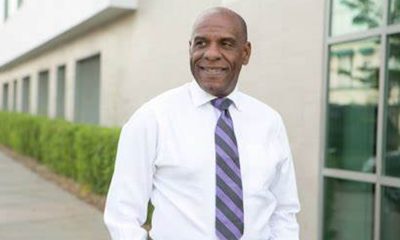
 Community1 week ago
Community1 week agoFinancial Assistance Bill for Descendants of Enslaved Persons to Help Them Purchase, Own, or Maintain a Home
-

 Activism3 weeks ago
Activism3 weeks agoOakland Post: Week of April 3 – 6, 2024
-

 Business1 week ago
Business1 week agoV.P. Kamala Harris: Americans With Criminal Records Will Soon Be Eligible for SBA Loans
-
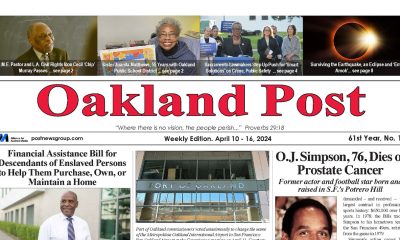
 Activism2 weeks ago
Activism2 weeks agoOakland Post: Week of April 10 – 16, 2024
-
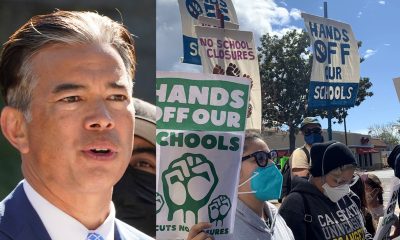
 Community1 week ago
Community1 week agoAG Bonta Says Oakland School Leaders Should Comply with State Laws to Avoid ‘Disparate Harm’ When Closing or Merging Schools
-

 Community6 days ago
Community6 days agoOakland WNBA Player to be Inducted Into Hall of Fame









